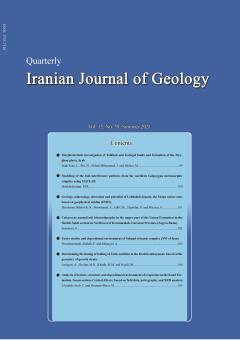-
-
List of Articles
-
Open Access Article
1 - Morphotectonic investigation of Talkhab and Tozlugol faults and formation of the Meyghan playa, Arak
leili Izadi kian نسرین پیری محمدجواد اکبری Masomeh Molaei -
Open Access Article
2 - Modeling of the fold interference patterns from the northern Golpaygan metamorphic complex using MATLAB
Mohammad Reza Sheikholeslami -
Open Access Article
3 - Geology, mineralogy, alteration and potential of Lakhshak deposit, the Sistan suture zone based on geophysical studies (IP/RS)
نسیم حیدریان دهکردی شجاعالدین نیرومند شهرام ادیب Hossein Ali Tajeddin Saeid Mirzaei -
Open Access Article
4 - Calcareous nannofossil biostratigraphy in the upper part of the Garau Formation in the Sheikh Saleh section in Northwest of Kermanshah, Lurestan Province (Zagros Basin)
سعیده سنماری -
Open Access Article
5 - Facies studies and depositional environment of Sahand volcanic complex (NW of Iran)
Farhad Pirmohammadi alishah Ahmad Jahangiri -
Open Access Article
6 - Determining the timing of folding of Jarik anticline in the Dezful embayment, based on the geometry of growth strata
Ahmad لشگری Mahmoud reza Hayhat Mohammad Mahdi Khatib Mahdi Najafi -
Open Access Article
7 - Analysis of texture, structure and depositional environment of evaporites in the Kond Formation, Saran section, Central Alborz, based on field data, petrography and XRD analysis
zeinab Alizadeh Arab mahbubeh Hosseini-Barzi
-
The rights to this website are owned by the Raimag Press Management System.
Copyright © 2017-2025







